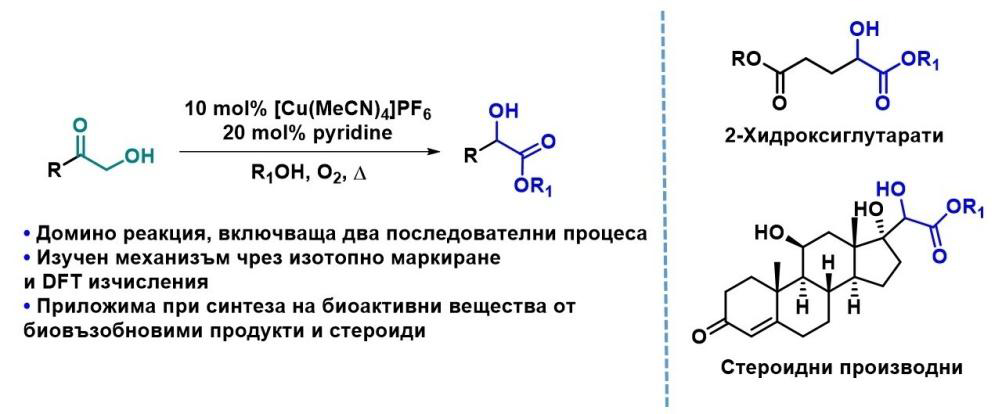
organic materials
New supercapacitors with activated carbon from biomass
Development of new supercapacitors with significantly lower internal resistance and better electrochemical stability than previously existing ones using an electrolyte containing an ionic liquid and activated carbon derived from biomass has been carried out at the Institute of Electrochemistry and Energy Systems. The addition of ACN (solvent acetonitrile) to EMIMBF4 (methylimidazolium tetrafluoroborate) significantly lowers the internal resistance and improves the electrochemical stability by several orders of magnitude, which is due to a decrease in viscosity and prevention of the decomposition of the ionic liquid.
Contact:
office@jic.bas.bg

organic materials
Copper-catalyzed tandem reaction converting α-hydroxyketones into valuable α-hydroxyesters
Researchers from the Institute of Organic Chemistry with the Center for Phytochemistry have developed a copper-catalyzed tandem reaction converting α-hydroxyketones into valuable α-hydroxyesters. Biorenewable methyl- and ethyl-5-hydroxylevulinates can be converted into a series of practically valuable, unsymmetrical diesters of 2-hydroxyglutaric acid in good yields. 2-Hydroxyglutarate has cardioprotective, nephroprotective and antiasthmatic properties, and is also an oncometabolite and finds application as a biomarker in cancer monitoring, and the method is also used for modifications of steroid molecules such as cortisone, hydrocortisone, prednisone and prednisolone, which have analgesic and anti-inflammatory properties.
Contact:
office@jic.bas.bg
